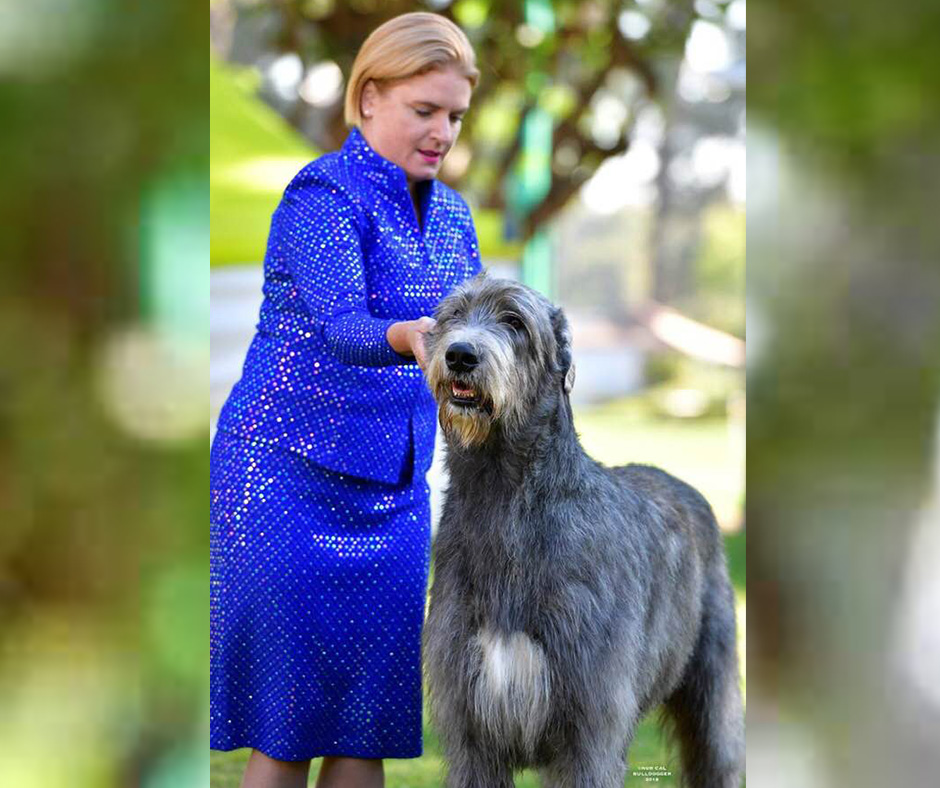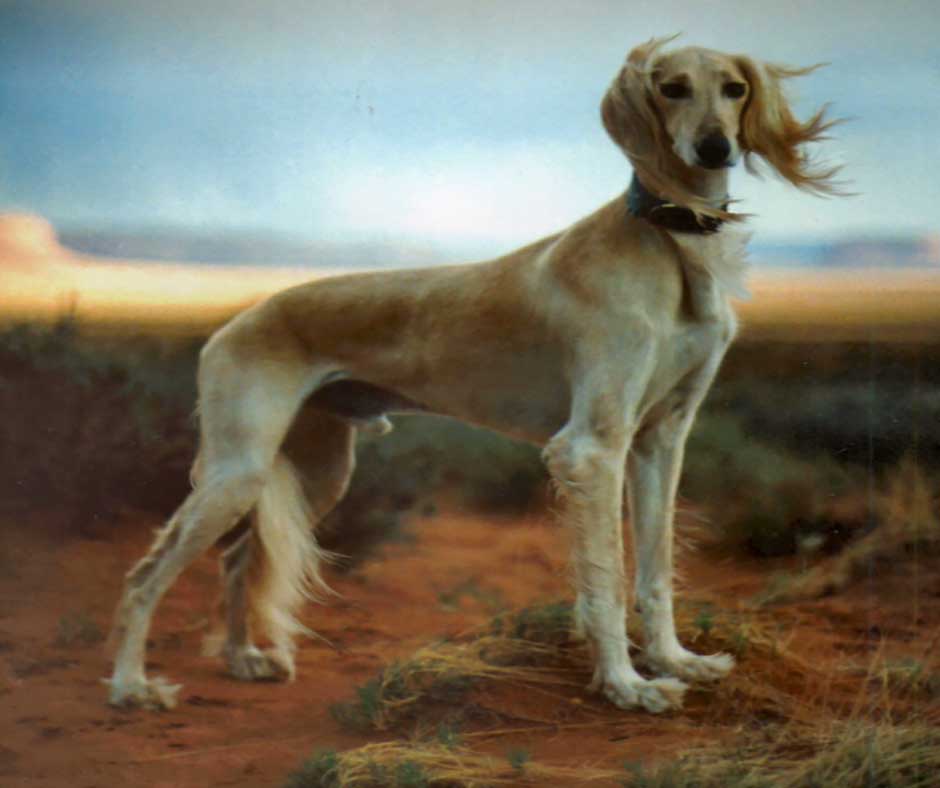674 – Irish Wolfhounds: Soulful Gentle Giants
Irish Wolfhounds: Soulful Gentle Giants
Love the Breeds returns as host Laura Reeves talks with Jamie Souza Bartlett about Irish Wolfhounds, the gentle giants of the dog world.

Jamie grew up with Irish Wolfhounds with her mom, Linda Souza.
“They’re just, they’re soulful, they’re sweet. They’re the gentle giants and I was very, very fortunate to grow up with them,” Jamie says.
“Wolfhounds, much like a lot of breeds, were bred for a specific purpose, which was to hunt wolves in Ireland. Eventually, the wolves became extinct in Ireland, and consequently the wolfhounds almost became extinct. And then several years later Captain Graham came along and really found that this was a breed that required rejuvenation and real, real rescuing and bringing back because they’re just so wonderful.
“You don’t own wolfhounds, you’re owned by them. It’s not an easy breed to have by any means. It comes with its own set of issues. But when you do own them and you’re owned by them, there’s just really no greater thing in the world. They are so soulful and so wonderful and like, you become part wolfhound.
Feeding
“As a young dog, they eat quite a bit because you’re looking at a puppy that is a pound when it’s born and it’ll be 100 pounds by the time it’s six months old. So the growth rate is very rapid and they do eat quite a bit as babies. And then quite quickly, once they kind of reach their full height it curbs significantly because you’re not looking at a dog that’s like a Doberman or something that’s constantly pacing, constantly moving around. They will have bursts of energy. Big burst of energy in the morning, big burst of energy when it gets cold at night, and the rest of the time they’re chilling. So they really don’t eat as much as an adult as one would think, considering their size.

Puppies in the breed grow fast!
“I always encourage anybody to listen to their breeder and their breeding program because different lines tend to evolve differently and grow at different rates. We were always just really careful. We wanted them off of puppy food and anything that was promoting rapid growth as quickly as possible. We’re trying to do things that are keeping them from growing too fast, which is kind of like the opposite of what a lot of other people do or they want them to like beef up. Really, that’s absolutely what we don’t want to do.
Exercise
“We also have a lot of protocols, not just around food, but around exercise. And we tell all of our new puppy buyers like you have to be very, very careful with this breed as they’re growing up. And again, the inclination is like, ‘ohh, I got a puppy and I want it to go run around and play with my other dogs and I want it to be jumping around and being goofy’ and it’s just a hard no.
“Until these dogs’ growth plates close you can do really, really irreparable damage and we tell people don’t take them into the hotel rooms and let them jump on the beds and jump down, you don’t want all that impact on them as they’re growing. Once they hit that two year old range then we’ll start putting them out carefully with other dogs. It was one of the great things actually about having whippets. My whippets are fantastic exercising our wolfhound puppies, right, because there was no to low impact, but it helped with their movement. They’re running, but kept them developmentally in a good place where they weren’t getting injuries to the shoulders or elbows or anything else.”
595 – Love the Breeds: Salukis with Caroline Coile
Love the Breeds: Salukis with Caroline Coile
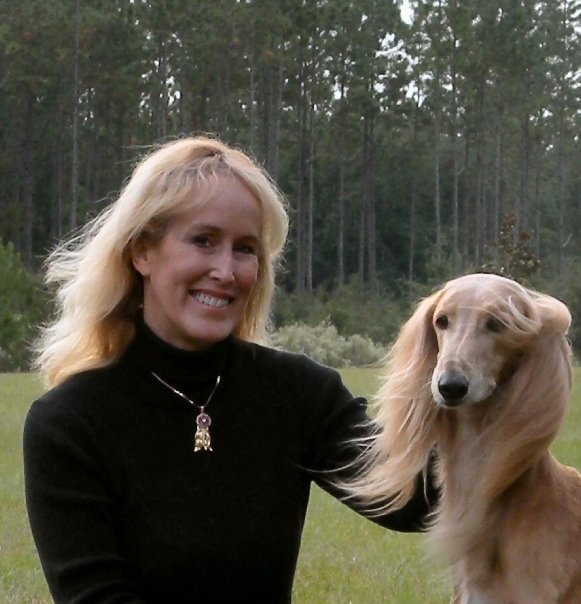
Caroline Coile with her Saluki, Prophet.
Author and Saluki breeder Caroline Coile joins host Laura Reeves for the kick-off of our Love the Breeds feature.
Some of Coile’s tongue-in-cheek descriptions of the ancient breed include “breathing furniture,” “arm candy” and “they don’t like to show their feelings.”
“We have a lot of artwork that does indicate that there were saluki-like dogs … all over the Middle East,” Coile said. “But not just the Middle East, but everywhere the Silk Road went. We see them in China and obviously, it’s pretty easy to take this dog and bring it with you to trade or hunt or whatever.
“We know that some of the first Salukis that came to the western part of the world, to England, were there by the 1700s because there was a famous painting of Zilla … she was, if we can judge from this painting, a gorgeous black and tan, very refined, long feathering… she would have won in the show ring today.
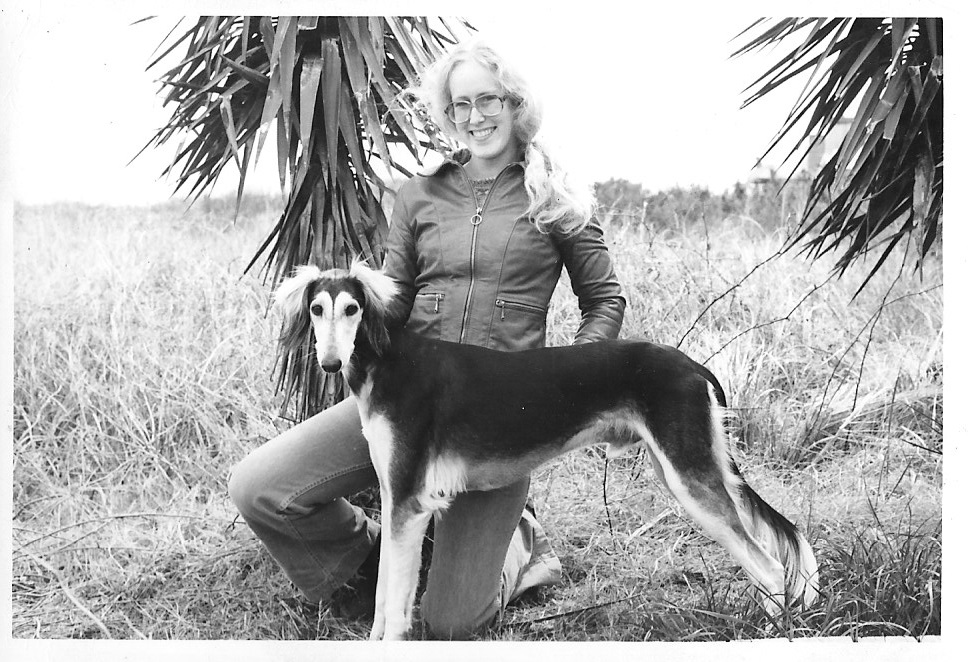
Baha, Ch Srinagar Bhavant Bhairava CD LCM, Coile’s first saluki, in 1975.
“I think that there were two different families (of Salukis), those that went with the Bedouin and they probably hunted hare and rabbit and helped fill their pot with that whatever they could catch. And then I think there were some that the royalty took out on the giant Gazelle Hunts, which would have been a great King Tut and all that sort of thing. A great sport, but probably not a cost efficient one in terms of, you know, calories per what you can bring back.
“An advantage to the Saluki is how peaceful they are. When they’re not going, they’re peaceful and they’re not fighting with each other. They’re not fighters. They get along. This is the norm. They like to sleep in your bed. They won’t stay off your furniture. They are climbers. I have one that can get on the refrigerator. Oh well, she doesn’t just jump up from the floor, she gets on the counter beforehand and won’t stay off that though so I put stuff on the refrigerator to keep it away from her.
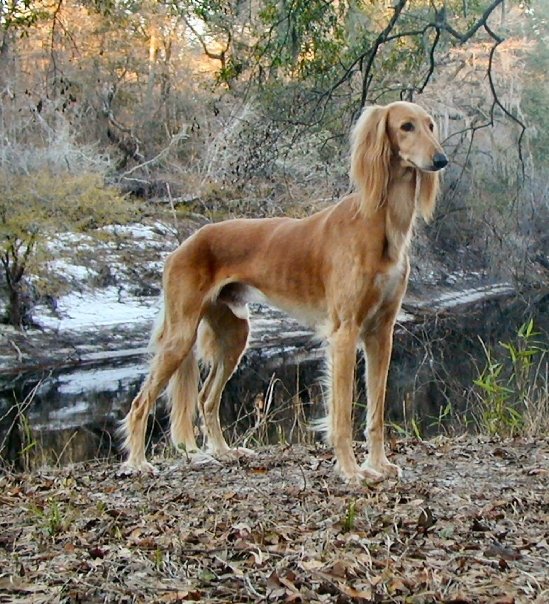
BIS BIF HIT GCh Khiva’s Prophet of Baha, CD, FCh, SC, RA, JOR
“I know one of the things that I think is really important to get across to folks that want to live with what I sort of jokingly, to my friends, refer to as dog arm candy. They’re really beautiful. (But) the important part to remember is they’re dogs and their long developed natural instincts are to chase and kill things and do that very independently.
“The whole motto is that saying ‘if looks could kill’ … you look at their breed standard and that basically defines the saluki breed standard in four words. I get a lot of inquiries from new pet owners saying, ‘We’re marathon runners and we heard that Salukis are long distance runners.’ And I have to say, ‘Yeah, they’re long distance sprinters, if that makes any sense? They can run at full double suspension gallop longer than any other breed, but I guarantee you that if you try to trot with it for any length of time, it’s like dragging an anchor behind you. They’re not into that. They like to go full speed.
“And then the other thing I would say is that I don’t know about other breeds, but Salukis are the biggest complainers of the dog world. Oh, it’s too hot. It’s too cold. Because they act like they’re royalty.”

